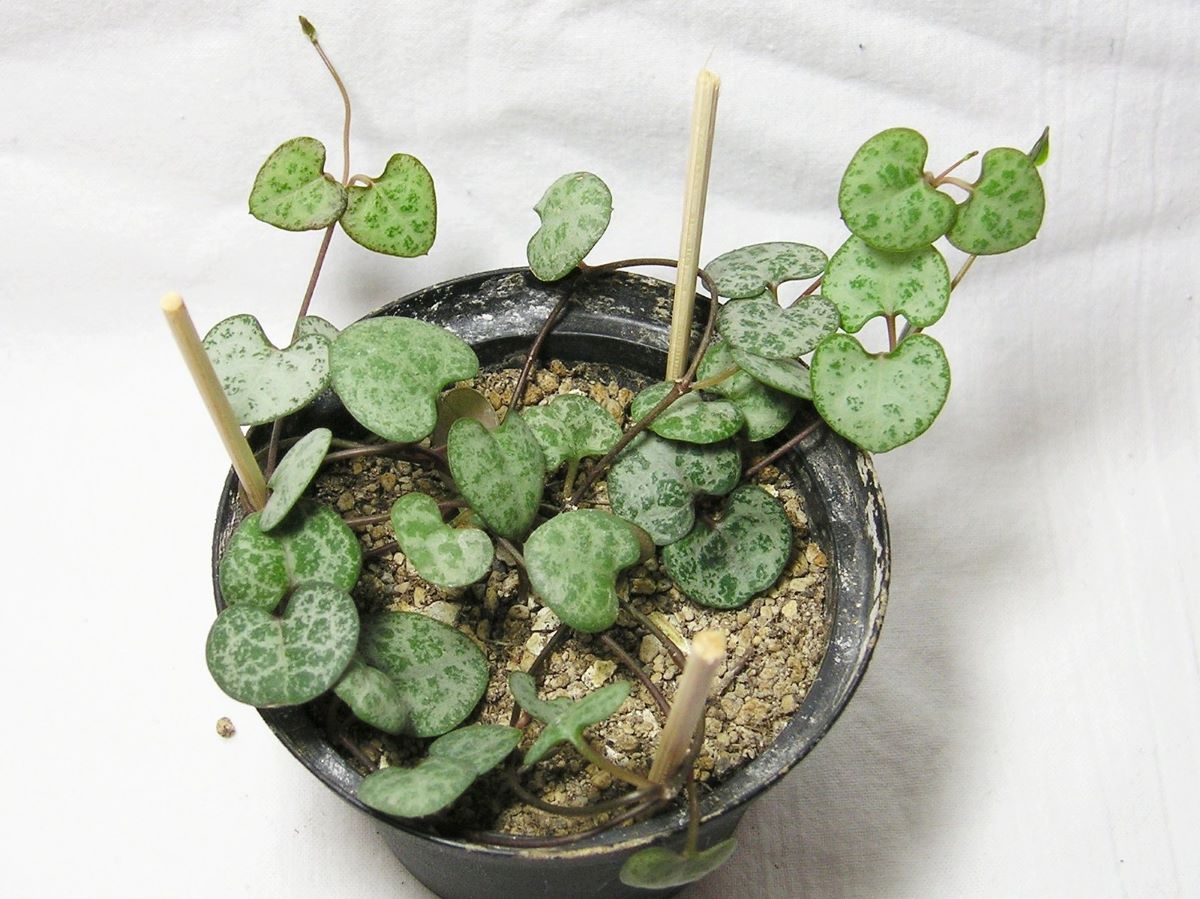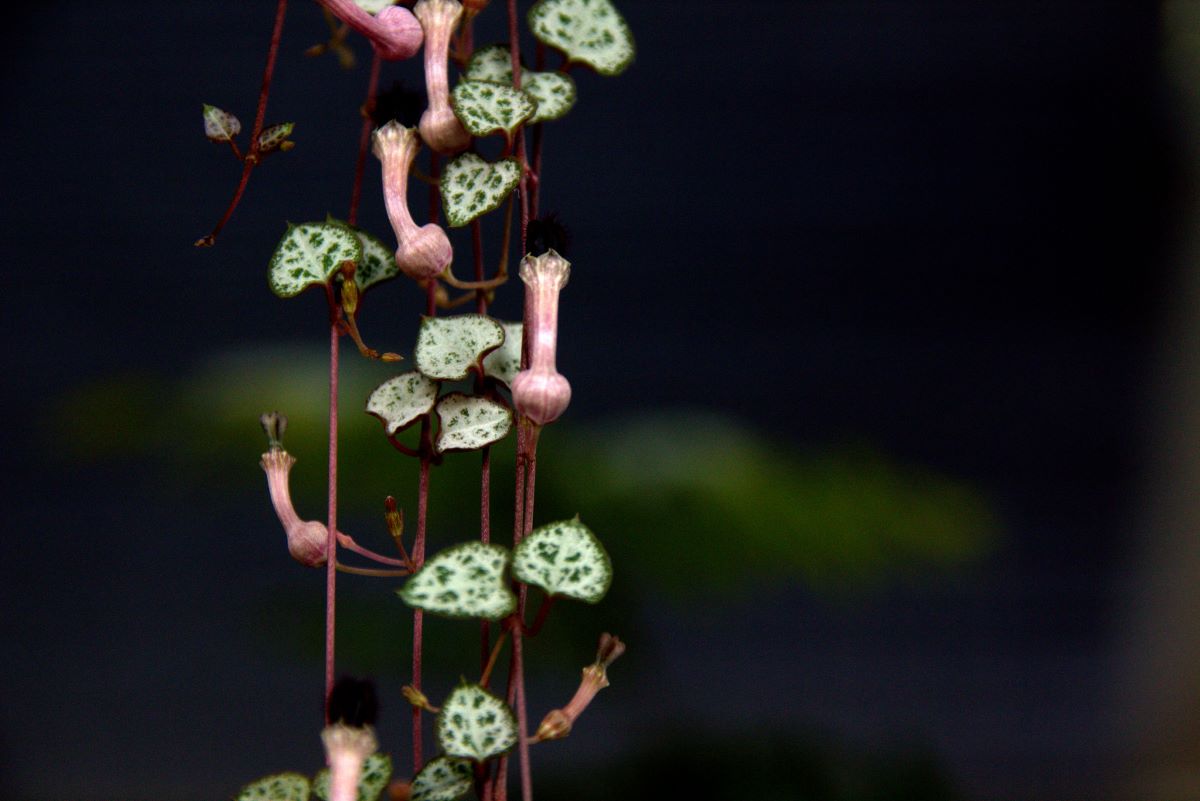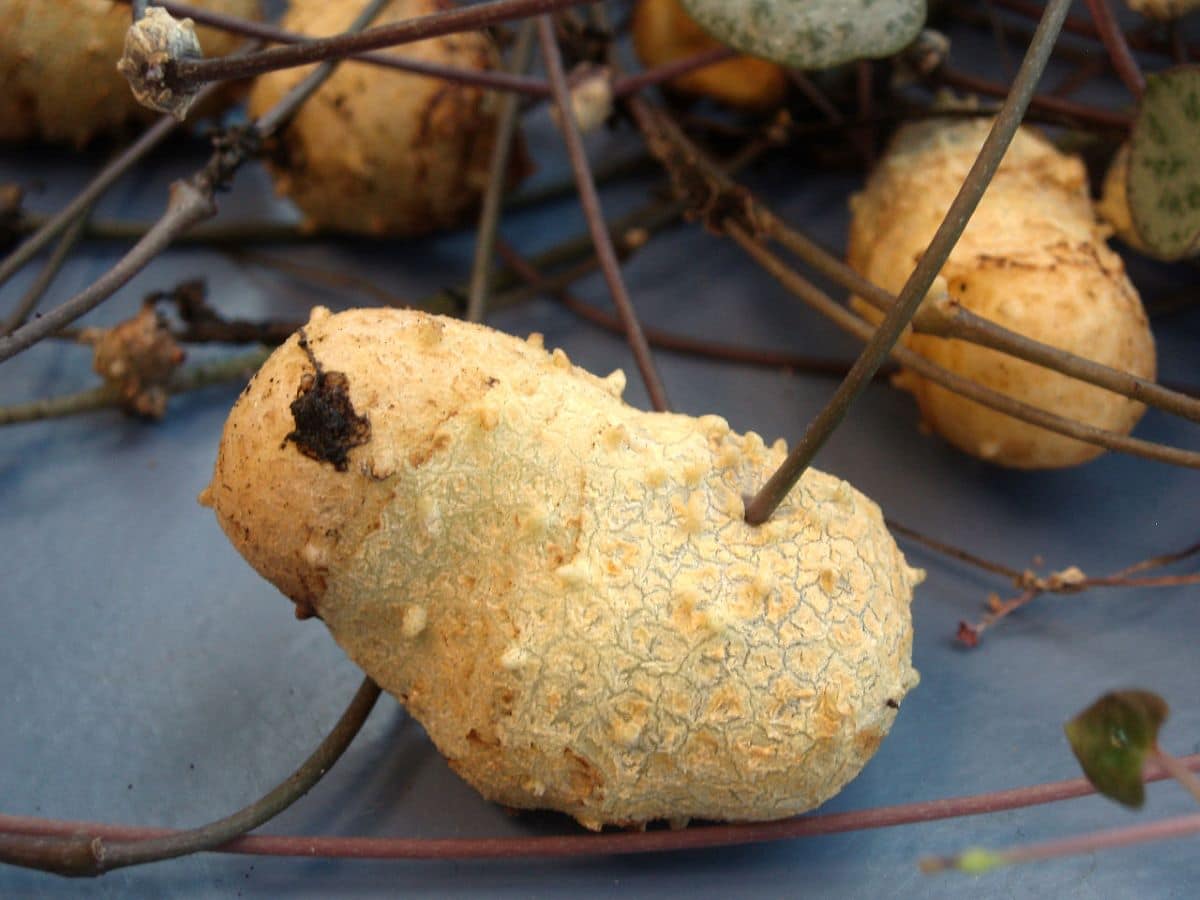
Image - Flickr / Maja Dumat
La Ceropegia woodii It is a plant that often goes unnoticed by fans of succulents. And reasons are not lacking, since if it is observed from afar it gives the impression of being an ordinary herbaceous. But it really is one of the succulents that will look the most in hanging pots, or on a balcony if weather conditions allow it.
It has beautiful heart-shaped leaves, a characteristic that has given it the name of a heart necklace. In addition, it has very curious flowers. Then you will be able to know all the secrets of the Ceropegia woodii.
Origin and characteristics of Ceropegia woodii

Image - Flickr / Maja Dumat
It is a perennial creeping or climbing plant endemic to South Africa whose stems and leaves are fleshy; the first ones of dark red color, and the second ones of very light green color with dark green spots. The latter are heart-shaped and relatively small: they are only about 2 centimeters in width and length.
If we talk about its flowers are about 3 centimeters long and tubular. Also, they are light white and magenta. The total height of the plant rarely exceeds two inches, unless it has a support to support its stems. Even so, the normal thing is to have it as a pendant, measuring about 3 or 4 meters at most.
The scientific name is Ceropegia woodii, although it is popularly known as a necklace of hearts or a mother's heart.
How to care for the mother heart plant?
If you want to decorate your balcony or patio with this succulent, we are going to recommend that you give it a series of care. These are:
Where to have it?
La Ceropegia woodii It is a plant that can be had outdoors or indoors. If it is to be grown indoors, it will be put in a room where there is a lot of light, and also where there are no drafts.
In addition, it is important that the humidity is high to prevent its leaves from drying out. This is achieved, for example, by placing some containers filled with water around the pot. We do not advise spraying its leaves, since if you do, the fungi will surely infect them and end up dying.
If it is to be kept outside, on a balcony or planted on the ground, the ideal is that the sun does not shine directly. It can be in a pot hanging from a tree or palm tree, but not in an area completely exposed to the sun.
When to water Ceropegia woodii?
Only once in a while, when the earth is dry. But yes, every time it is watered, it will not be enough to add a little water. And is that with just a glass, or even half, only the most superficial roots will be able to absorb it. Those that are lower, on the other hand, will continue to be thirsty.
For this reason, it is very important that, every time we water, we add enough water until it comes out through the holes in the pot, or if it is on the ground until it is well soaked.
What substrate or soil is suitable?

Image - Flickr / manuel mv
En general, it will be one that drains water well, and is light so that the roots can breathe normally. Thus, if it is going to be in a pot, it is highly recommended to mix equal parts universal substrate with perlite for example (for sale here), or pumice (for sale here).
On the other hand, if it is going to be on the ground, it is equally necessary that the soil be sandy, so that the water can filter quickly.
Subscriber of the Hearts Necklace
Like all succulents, our protagonist feels good if it is paid regularly during the warm months of the year, which is when it grows. For this, fertilizers for cacti and succulents will be used (for sale here), and preferably liquids so that the plant can absorb it better. Likewise, the manufacturer's instructions must be followed, as an error could be fatal.
How to reproduce the Ceropegia woodii?
Cuttings
The fastest way is by cuttings in spring-summer. You simply have to cut a stem and plant it in a pot with substrate for succulents that you will have previously watered, and then put it in a bright place but without direct light. So that the stem does not fall, you can nail a stake or stick and attach it to it.
Go watering every time the soil is dry. A) Yes in the course of about 20 days it will begin to emit roots. But leave it in that pot until it has rooted well, since if you change it ahead of time the rootlets could break and you would have to start over.
Tubers

Image - Wikimedia / Mercewiki
Another quick way to get a new copy is digging up the tubers and cutting one. This is planted in a separate pot, with succulent soil that will stay moist (but not watery). It is necessary that when planting it is almost completely buried. In this way new stems will sprout.
Seeds
If you have a chance to get seeds, plant them in spring or summer in a pot wider than it is tall, and also with substrate for succulents (for sale here). Put them on the surface, and sprinkle a little dirt on top. In this way, they will not be so exposed to the elements and will be able to germinate, something they will do in the course of a few days if they are fresh.
Pests and diseases of the chain of hearts
It is a very resistant plant, although there are some pests that can affect it, such as mealybugs, aphids and snails. We will see the first two in spring and especially in summer, which is when the climate stimulates their biological cycle. They can be removed by hand or using cotton or a brush with plain water or with a few drops of pharmacy alcohol. For snails it is best to use a natural repellent such as this.
Diseases only appear when overwatering, and / or if the leaves get wet daily. The roots could become necrotic, and the foliage could rot. Therefore, it is important to water only when necessary, and in case of symptoms, cut the affected parts and treat with a fungicide that contains copper (for sale here).
Rusticity
La Ceropegia woodii It is a plant that, due to its origin, You do not have to be outside if the temperature drops below 15ºC.. But this is not a problem since it can be grown indoors.
Where to buy?
Get your copy here:
